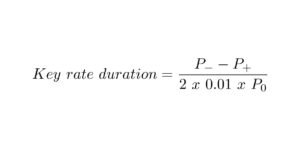What is a Kangaroo Bond?
A kangaroo bond is a foreign bond with an Australian dollar denominator that non-Australian businesses offer on the Australian market. Australia’s securities laws apply to the bond. “Matilda bond” is another name for a kangaroo bond.
The Functions of a Kangaroo Bond
Kangaroo bonds, so named because they are the national animal of Australia, are issued by bond issuers who wish to gain access to lenders and investors in the Australian debt market. A kangaroo bond is a foreign bond that non-domestic entities, such as governments, financial institutions, and corporations, issue in Australian dollars.
In short, a foreign issuer issues a foreign bond in the home country’s currency on the local market. The fundamental purpose of foreign bonds is to give issuers access to a different capital market to raise money.
With kangaroo bonds, large enterprises and investment firms can raise Australian dollars while diversifying their assets and enhancing their overall currency exposure. To minimize the foreign issuer’s total interest burden and cost of borrowing, kangaroo bonds are usually issued when interest rates in Australia are low in comparison to the domestic rates of the foreign firm.
Advantages of a Kangaroo Bond
When a business needs foreign cash or thinks it can obtain favorable borrowing rates elsewhere, it may decide to join a foreign market. A corporation can issue foreign bonds, or bonds denominated in the target market’s currency, to enter a foreign market.
Because kangaroo bonds are denominated in local currency, they are a desirable investment option for domestic investors who do not face currency risk. Additionally, these bonds offer extra income to investors who want to expand the diversification of their portfolios outside their local borders. Essentially, kangaroo bonds offer a way to invest in international businesses without dealing with the consequences of currency exchange rate swings.
When issuing kangaroo bonds, many issuers don’t always require Australian dollars. Through financial instruments like cross-currency swaps, the proceeds from the sale of the bonds are usually transformed back into a currency that the issuer demands.
Using these swaps, the issuer’s foreign exchange risk related to its obligation to repay the principal and pay coupons in Australian dollars is hedged. Using a cross-currency swap, an issuer of kangaroo bonds can, for instance, lend Australian dollars at the bank bill swap rate (BBSW) plus the basis while paying the fed funds rate plus a margin for U.S. dollars.
An illustration of a kangaroo bond
As part of an A$1.5 billion kangaroo bond program, Emirates NBD, the largest bank in Dubai, priced a 10-year bond for A$450 million ($362.03 million) in January 2018. The bond has an indicated annual coupon rate of 4.75 percent. The bank issued the bonds to expand into new markets and diversify its funding sources.
Germany and the United States have historically been the two countries that have issued the most kangaroo bonds. Samurai bonds, Maple bonds, Matador bonds, Yankee bonds, and Bulldog bonds are some more foreign bonds.
Conclusion
- Foreign companies issue kangaroo bonds in the Australian market, and the money they are worth is Australian dollars.
- Companies might sell bonds in different currencies to access another country’s market or interest rates or to get cash in that currency.
- Companies from other countries often try to get more investors by raising money in other countries.
- Australian buyers who buy kangaroo bonds don’t have to worry about currency risks like they would if they bought the same bonds in a different currency.














































